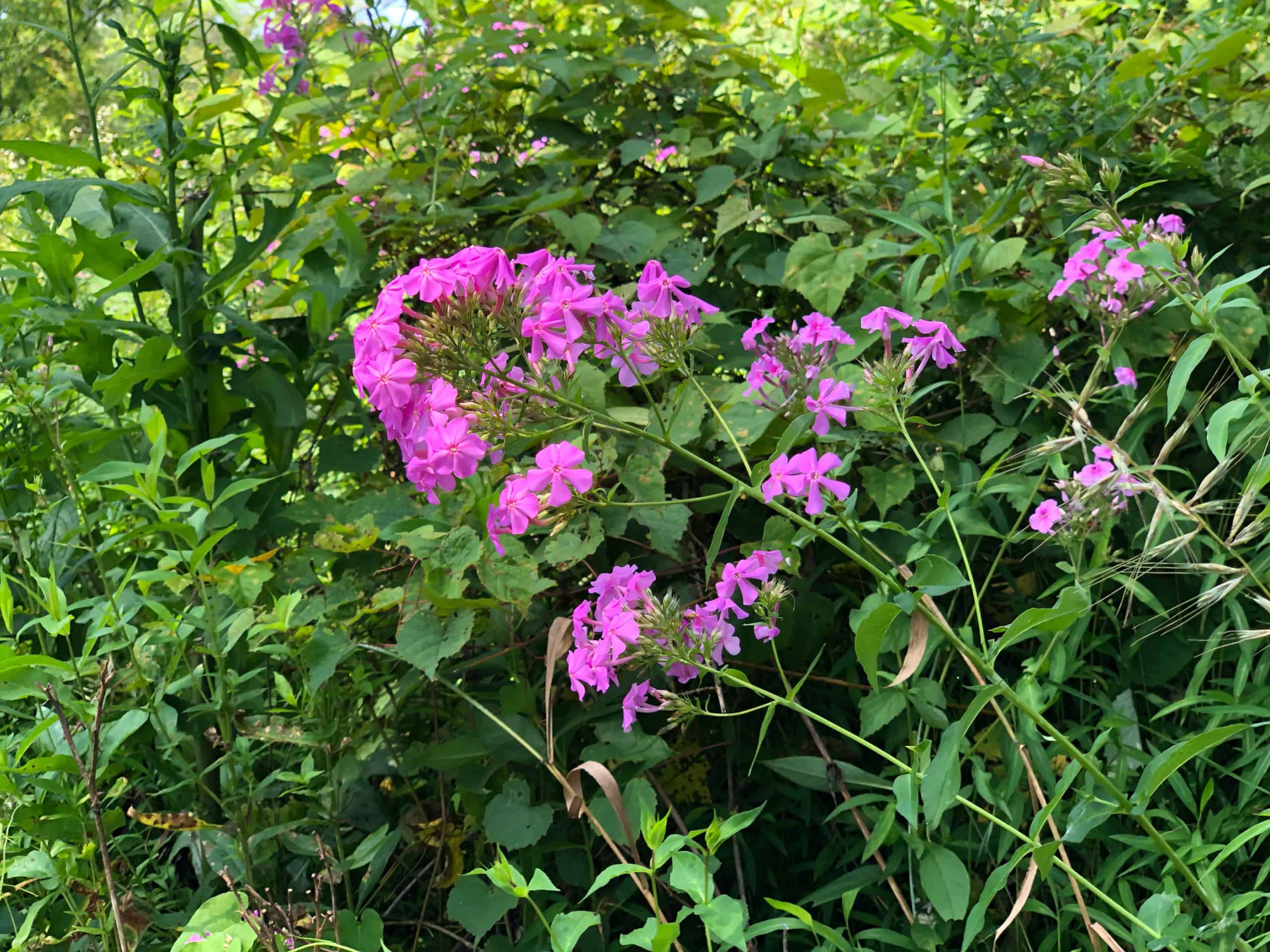Crow’s Nest: Love summer
By Daniel Barringer, Preserve Manager.
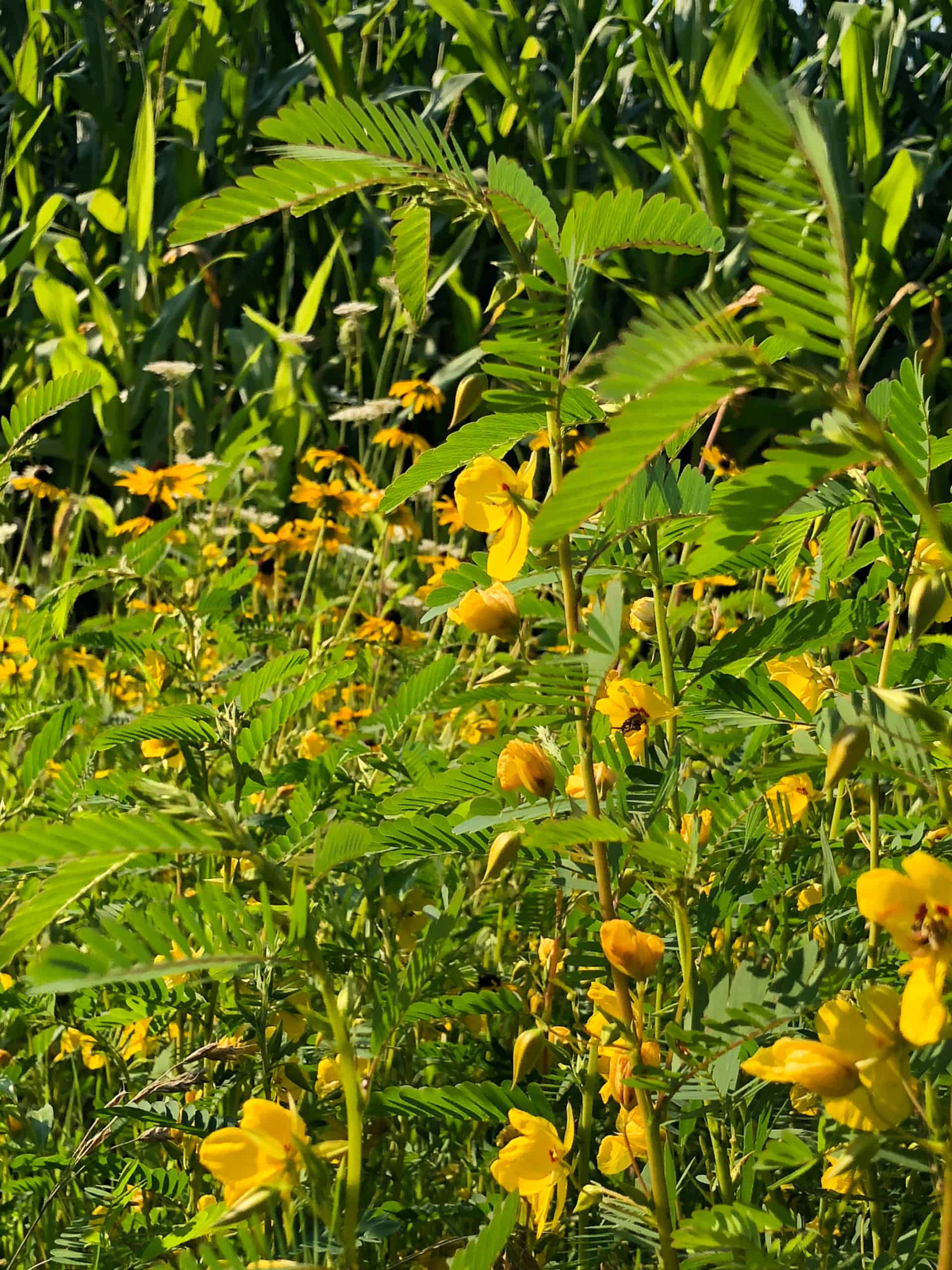
I do love summer—despite the heat, humidity, insects, and poison ivy. This is the time of year for easy living: it’s getting light when I wake up, I don’t have to spend time bundling into many layers of clothing, and as we enter August the nights are starting to cool down. Plus, the colors, sounds, smells, and taste (fresh fruit and vegetables)—summer is good. Above, partridge-pea (Chamaecrista fasciculata) is a native annual in the seed mix we used in the crop buffer plantings.

Above, the wildflower blazing-star (Liatris spicata) is in bloom sporadically in our northern meadows. Below, a monarch on narrow-leaf mountain mint (Pycnanthemum tenuifolium); the orange in the background is dodder (Cuscuta sp.). This is a meadow that we burned this spring.
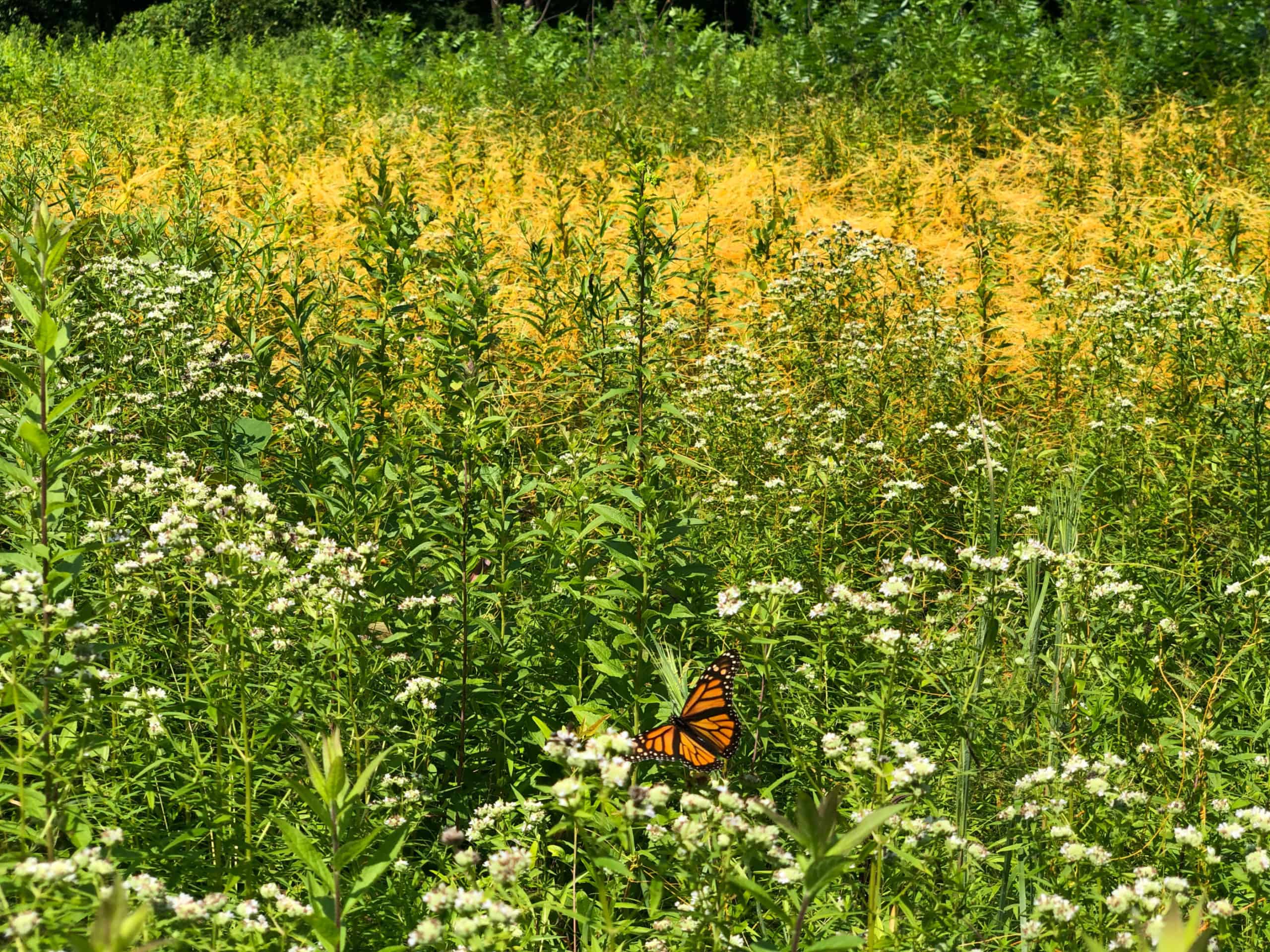

Above, an outstanding grove of black gum (Nyssa sylvatica) grows along the spring ditch (as it is locally known, but is actually a year-round stream) and also towers above the tiny library. Below, that black gum is beginning to show some of the fall color for which is is known and loved.
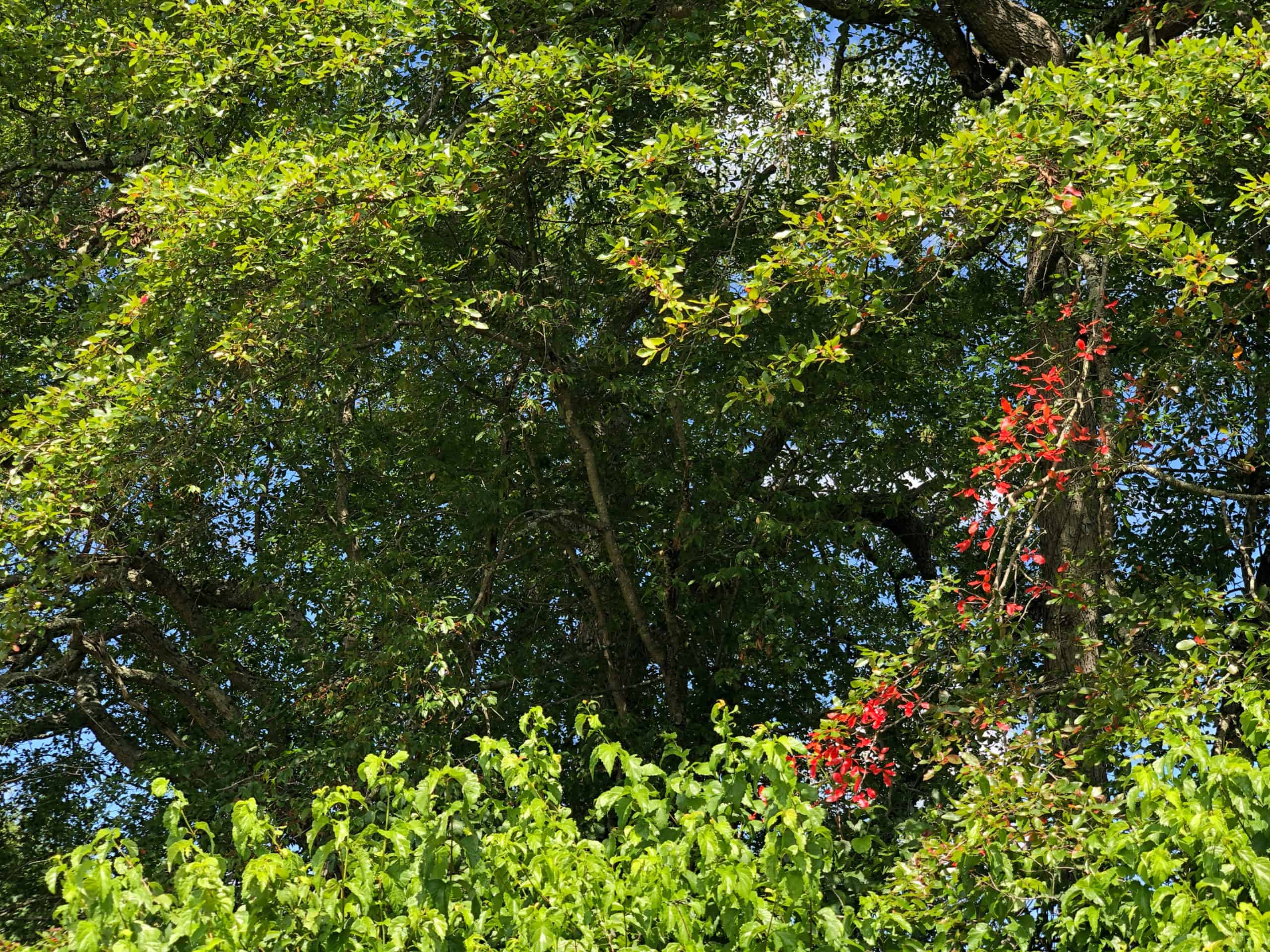
Below: I planted annual sunflowers in the stump of the huge ash tree we took down this year on Harmonyville Road.

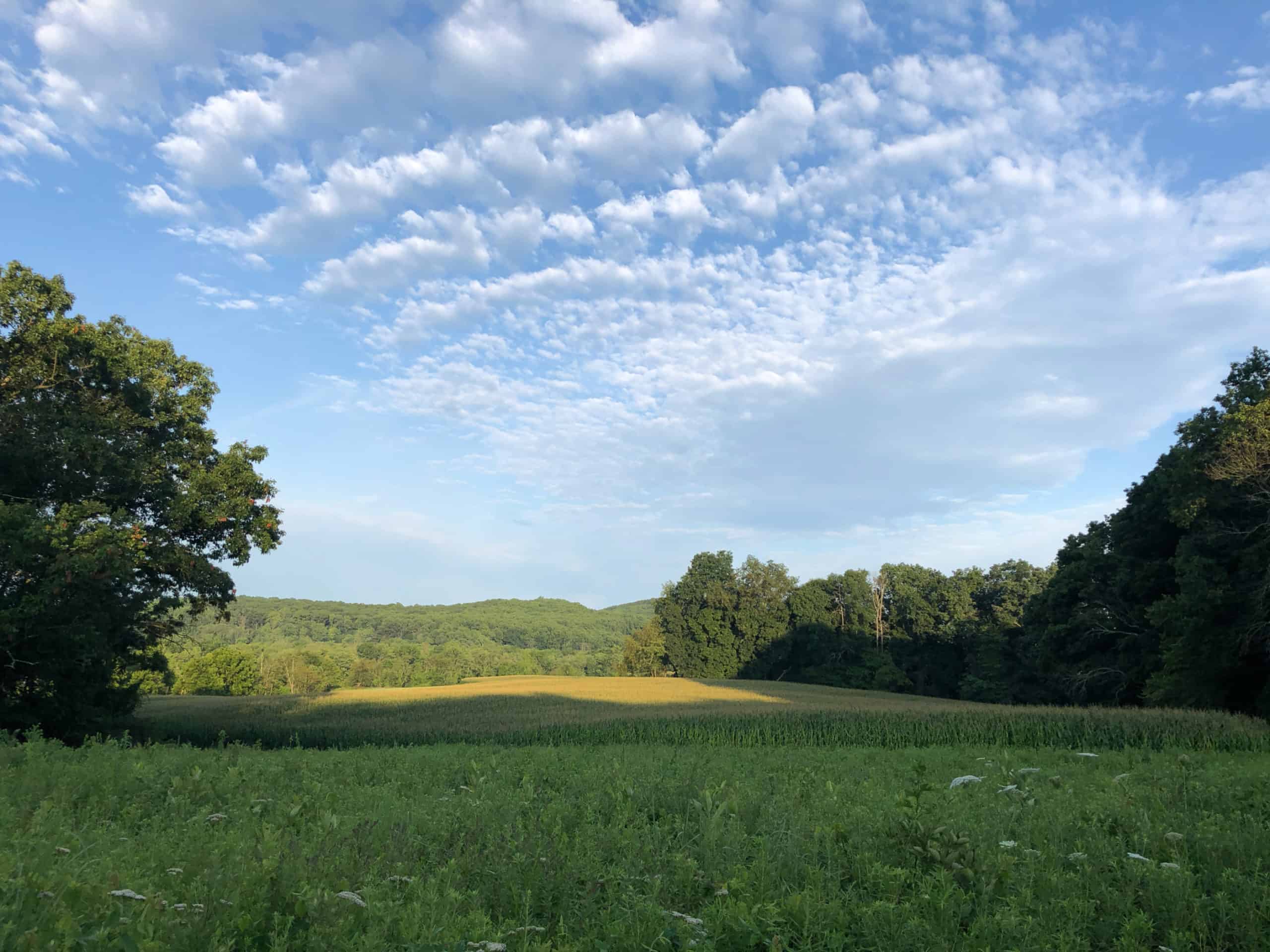
Above, the view from the Chief’s Grove at Crow’s Nest Preserve. Meadow in the foreground, corn fields beyond, woods on the surrounding hills. Below, Cardinal flower (Lobelia cardinalis) in bloom along the Creek Trail.
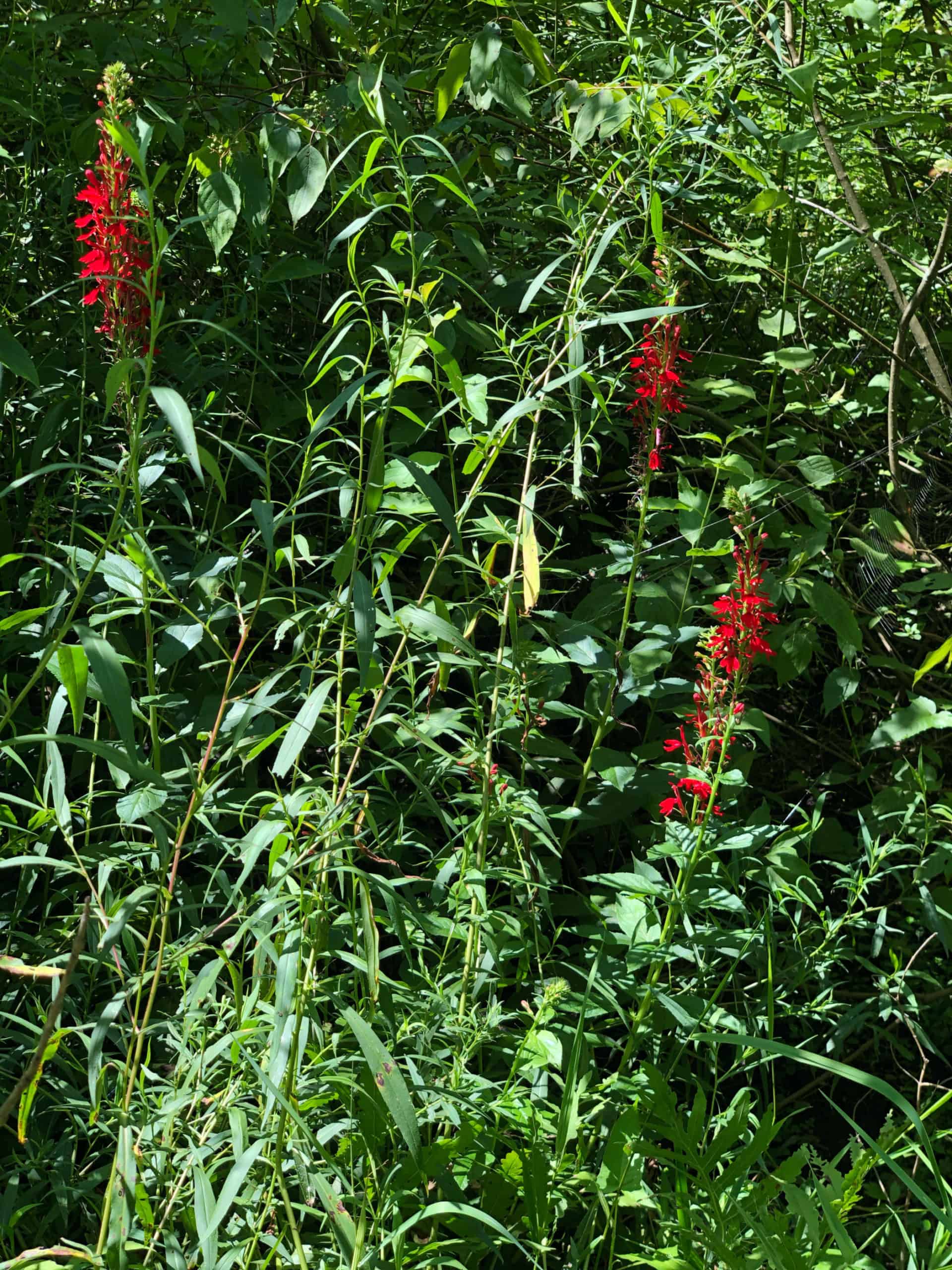

You don’t have to walk far to enjoy nature at the preserve. Wild bergamot (Monarda fistulosa) is blooming at the entrance to the parking lot. I think that was among the flowers that the camp kids planted using seed balls. Below, cut-leaf coneflower (Rudbeckia laciniata) is planted around the sign. This has been a particularly good year for this species; some years I’ve been disappointed by how short was its bloom time and how scraggly it looked the rest of the season. This year must have been a bit drier and it has been thriving. On the post is Virginia creeper (Parthenocissus quinquifolia) which came up on its own. In fact when the first post rotted away and this one was dug in to replace it, the Virginia creeper immediately resumed growing on the new one.
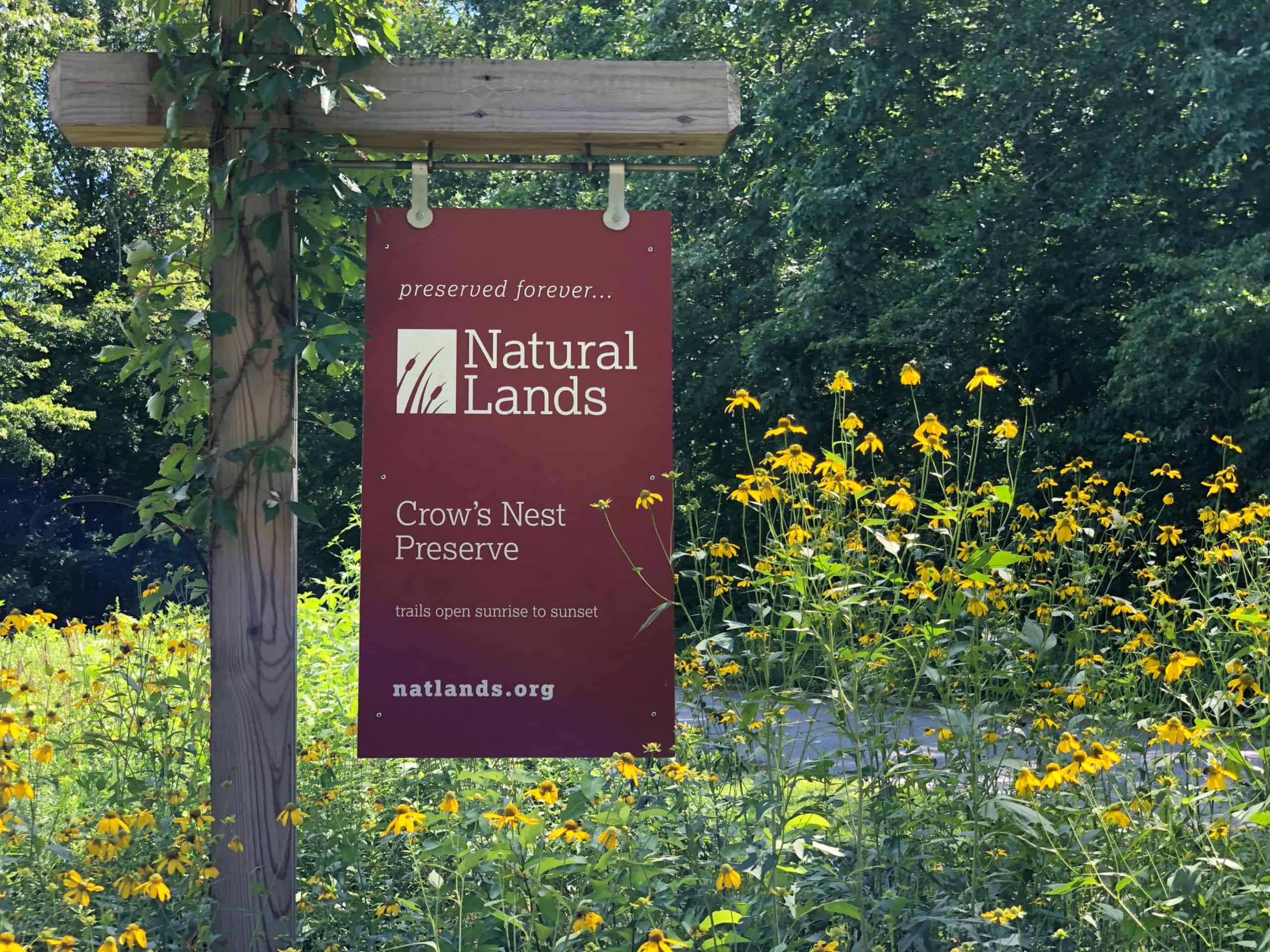
Finally, one more plant I love, garden phlox (Phlox paniculata, which is also a native species) growing in an area I left wild along the road near our house.
